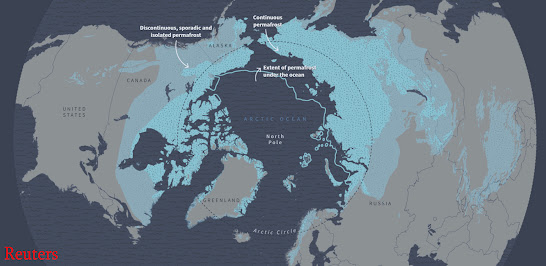Melting permafrost has become a new source for pathogens and added greenhouse gas emissions

At the current rate of global warming the average temperature of the atmosphere for the planet has risen 1.5 degrees Celsius over what it was at the beginning of the industrial age. During the same time the temperature at the poles has risen as much as 4 times the amount of the global average to as much as 6 degrees. Permafrost, which is land that remains frozen for more than two years, is found in the most northern latitudes and therefore has been dramatically affected by the 6 degree increase in temperature. About a quarter of the northern hemisphere contains permafrost. We are already seeing a host of things happening as a result of the thawing of the world’s permafrost. The permafrost area where the world's depository of seeds for future generations is being stored, the Norwegian island of Spitsbergen , has already experienced periods of melting. Its melt waters flooded the entrance tunnel to the Global Seed Vault.(ref. 8). Pathogens and ancient viruses that were...